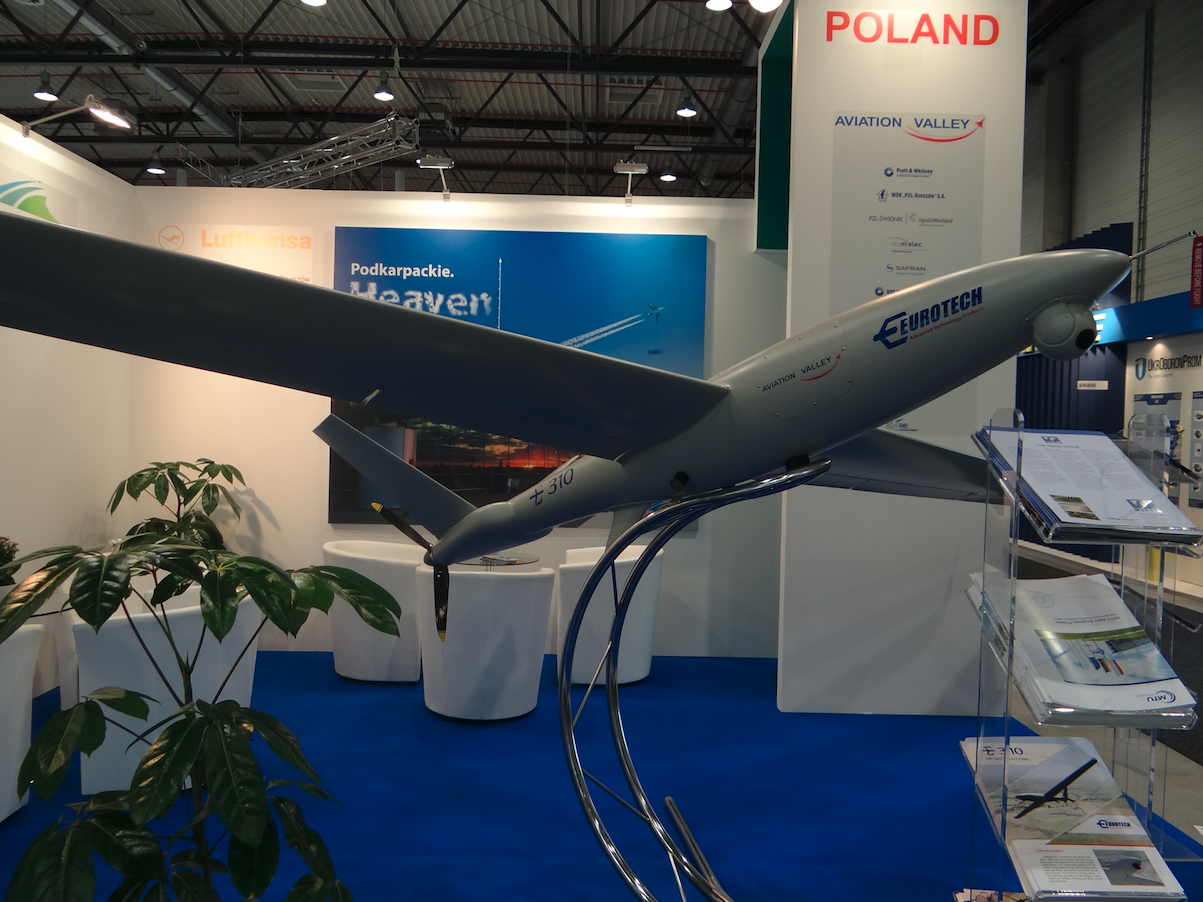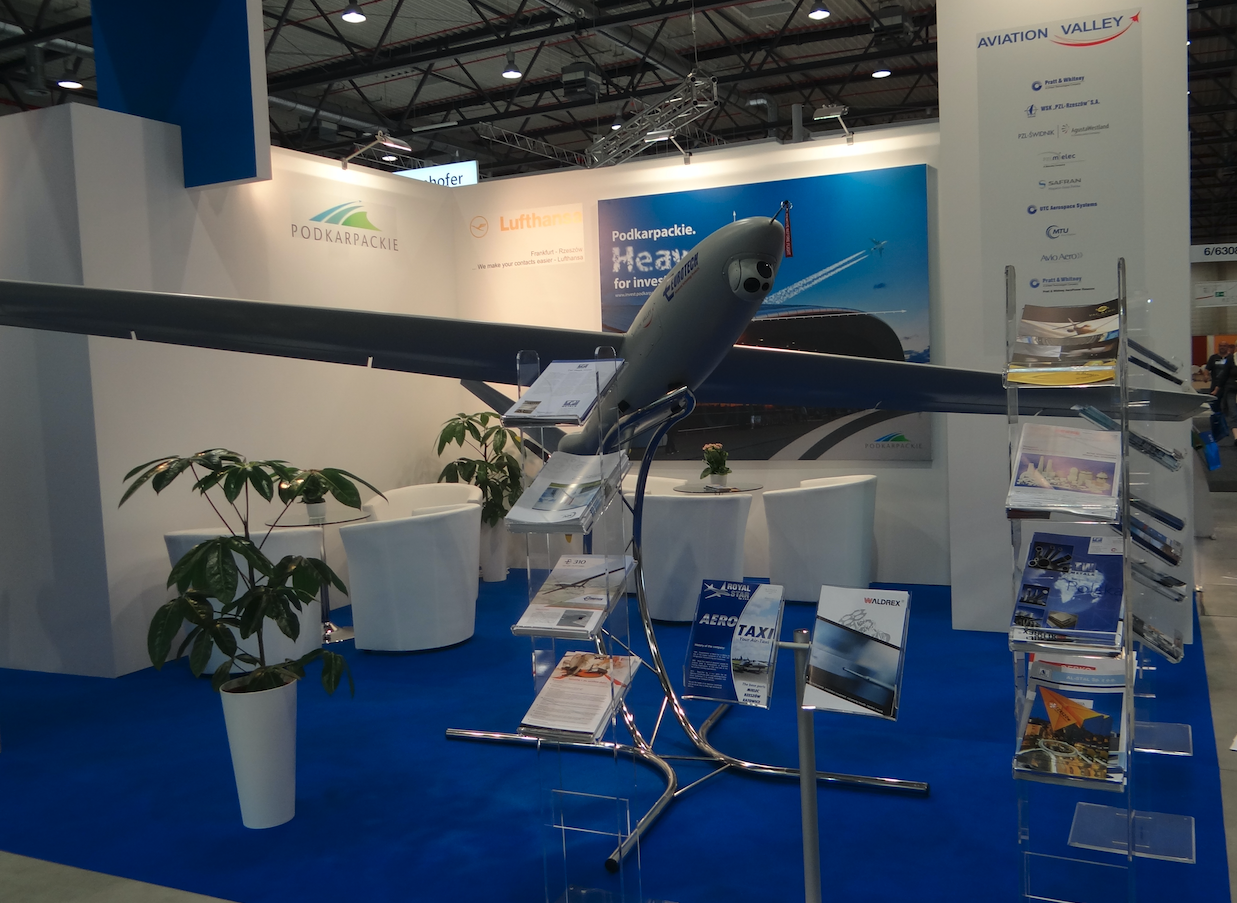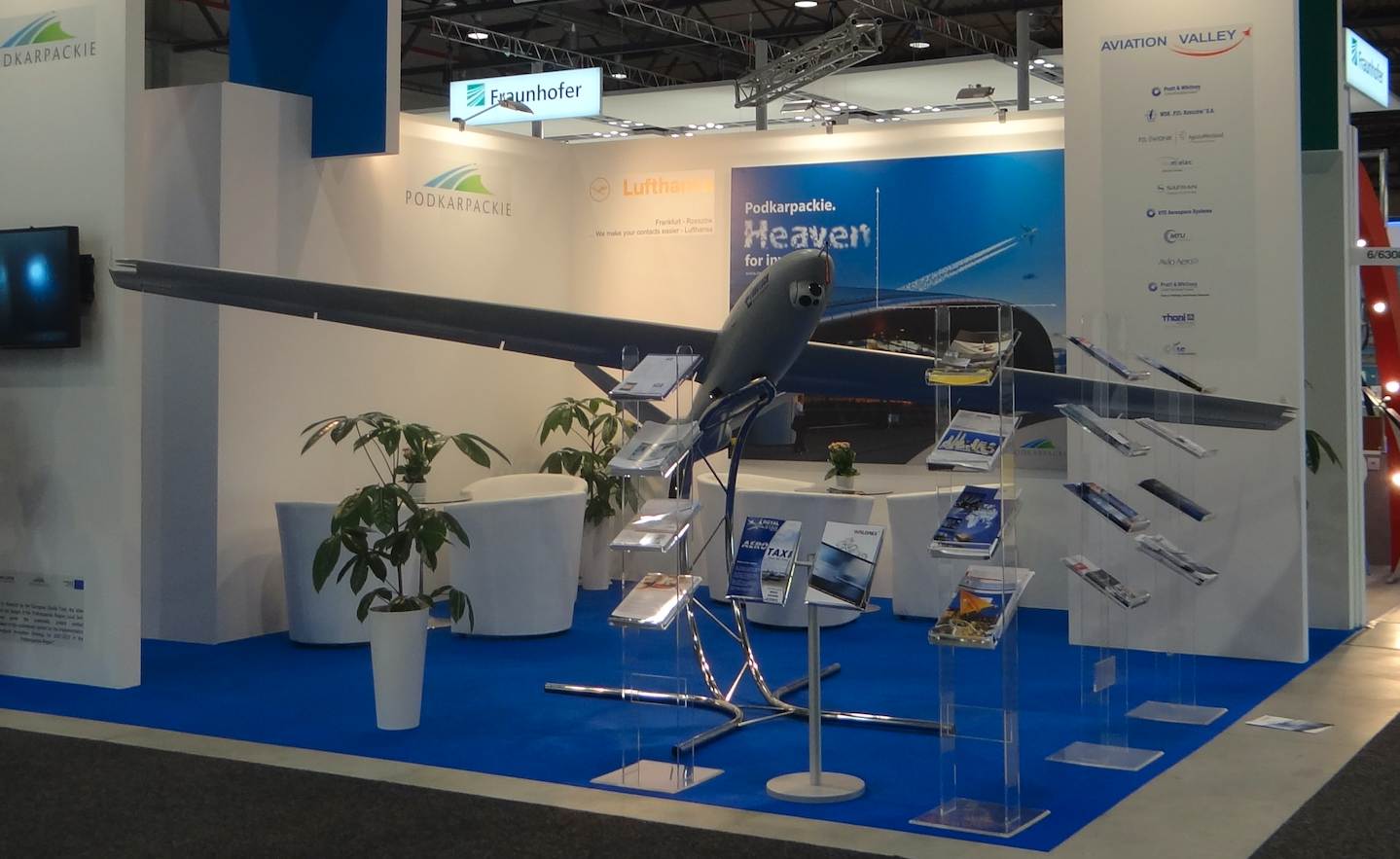Kraków 2014-10-22
BAL EuroTech E-310.
BAL stands for Unmanned Aerial Vehicle.
On May 20-25, 2014, at ILA Berlin, EuroTech presented the BAL EuroTech E-310 model. BAL was presented at the stand of the Podkarpackie Voivodeship and the City of Rzeszów.
BAL E-310 was designed by EuroTech in cooperation with the Pit-Radwar institute belonging to the Polish Armaments Group (PGZ). The prototype of the BAL E-310 system was exhibited during the Paris Air Show 2013 in Le Bourget, France, and during the international defense industry fair MSPO 2013 in Kielce. The E-310 demonstration flight took place at the Central Air Force Training Ground in Ustka in June 2014.
BAL EuroTech E-310 is an unmanned aerial vehicle designed for reconnaissance. The BAL EuroTech E-310 is primarily intended for military missions such as reconnaissance, surveillance and reconnaissance, and can also be configured for civilian applications. It belongs to the BAL of short range and to operate at low and medium altitudes. The BAL launch is carried out using a rail launcher, about 5 m long. The launcher is of the transport type, as a trailer. The BAL can land using a parachute or an extendable landing skid. The PIT-Radwar Institute developed a control station and communication systems for the E-310, and EuroTech was responsible for the air platform. The E-310 system consists of an unmanned aerial vehicle (UAV), a ground control station, a launcher, as well as a communication and data transmission system.
The airframe was made of composite materials. The flight apparatus is equipped with long, straight wings, the ends of which are fitted with winglets. The tail is placed at the end of the fuselage and is of the Rudnicki type. BAL shows low operating costs and offers high mobility. The modular design with an open architecture enables the integration of various mission systems. BAL can perform autonomous operations from take-off to landing using predefined waypoints. The optoelectronic head has an electro-optical (EO) eye and an infrared (IR) eye. The head works in daylight conditions and at night. The head also includes electronic intelligence (ELINT), a CCD camera, advanced reconnaissance and observation sensors, synthetic aperture radar (SAR), a night vision sensor, a laser rangefinder, and other specialized surveillance equipment. The operator can control the BAL from the Mobile Ground Control Station. The data from BAL is transmitted in real time and processed in the operator station. Data transmission may be encrypted. The operator position is transported on a medium-duty vehicle, which is also used to tow a starter trailer. Preparing the E-310 system for the mission takes about 1 hour. 2 people are enough to operate it.
BAL powered by a diesel internal combustion engine or alternatively by a hybrid electric engine. The engine was placed in the back of the plane’s fuselage. The engine moves a three-bladed propeller that works as a push blade.
T-T BAL EuroTech E-310 data:
Span 5.40 m. Length about 3.00 m. Height 0.70 m. The cruising speed is 120 km / h. Top speed 160 km / h. With a maximum take-off weight of 80 kg, the BAL can carry loads up to 20 kg. The operating ceiling was 5,000 m. The range was 150 km. The flight duration is up to 12 hours.
Written by Karol Placha Hetman



